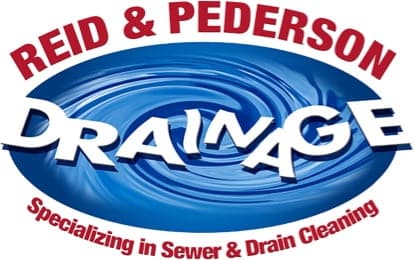A Drainage Minute: The Reid & Pederson Drainage Blog
How Municipal Sewer Systems Work: What Homeowners Need to Know

Municipal sewer systems should work silently without thinking much about it—until something goes wrong. Yet these complicated systems are constantly working to whisk wastewater away and safely treat it before returning clean water to your community.
But when trouble strikes, who is responsible, and what do you do next?
The drain and sewer specialists at Reid & Pederson are always here for all of your sewer help needs, from clogged sewer lines to deeper problems.
We’re also here with our pro tips to help avoid costly surprises and restore the integrity of your sewer for uninterrupted service
What Are Municipal Sewer Systems?
At its core, the municipal sewer system collects wastewater from homes, businesses, and public spaces and then transports it to a treatment facility. The water then undergoes a thorough cleaning process to safely remove contaminants and clean your water before it’s released back into the community.
From flushing your toilet to taking a shower or running the dishwasher, the wastewater moves away from your home through your private sewer line before connecting to the city’s main sewer line. The city’s line is usually located under the street. Gravity or pumping stations guide your water through a network of pipes to the treatment plant.
Are Homeowners Responsible for Municipal Sewer Problems?
It gets a little complicated when trying to figure out if you’re responsible for sewer issues. Private property owners typically bear the responsibility for damage, clogs, or repairs to the lateral sewer line, which connects your house to the city’s main sewer line.
The city is responsible for maintaining the main sewer line to make sure it can handle the community’s wastewater needs. If there are any blockages or tree roots in the city’s sewer line, it is their responsibility to fix them.
Keep in mind local rules and regulations all work differently. In some municipalities, your responsibility might stop where your property line ends. In other areas, you might be accountable for the portion of the lateral line extending to the main sewer connection. You can call the team at Reid & Pederson for help or make a quick call to your local sewer authority to clarify your specific obligations.
Sewer Problems to Watch Out For
Once you understand what you’re responsible for with your sewer, you need to understand some of the issues that can arise and how to prevent costly sewer repairs and inconveniences.
1) Clogs and Blockages
A combination of grease, oil, hair, and non-flushable items often cause clogs and blockages, which are the most common problems we encounter. All homeowners should know that so-called “flushable” wipes are actually not flushable and can cause damage in your sewer line. You can help keep things flowing and avoid repairs by regularly monitoring what goes down your drains.
2) Tree Root Intrusion
Tree roots love the moisture and nutrients that sewer lines provide and can invade and damage your pipes. If you have mature trees near your sewer line, you should consider scheduling regular inspections. Whenever possible, relocate smaller trees away from your sewer line.
3) Aging Pipes
Even well-maintained sewer pipes can eventually deteriorate due to shifting soil, light damage, corrosion, and general wear and tear. If you live in an older home, keep an eye on your system’s age and condition and watch out for even small clogs that won’t seem to go away.
4) Stormwater Overload
Heavy rains can quickly overwhelm sewer systems and lead to messy backups and damage. It’s crucial to install or check your backwater valve to protect your home from flood damage during extreme weather conditions.
What to Do If You Notice a Sewer Problem
Time is of the essence if you notice slow or sluggish drains, unpleasant odors, or backups in your home. If possible, determine whether the issue lies in your lateral line or the city’s main sewer line. You can also schedule a camera line inspection with the team at Reid & Pederson to pinpoint the source of the problem.
If the issue is in your lateral line, you need prompt repairs. Hydrojetting can help blast through stubborn clogs with the help of a powerful stream of water. Reid & Pederson also provides sewer repair, drain repair, maintenance, and other services to help you get your sewers back on track.
Tips for Responsible Sewer Line Care
Caring for your sewer line might not be on the top of your list of what you want to tackle, but it’s a savvy way to avoid costly repairs.
- Be mindful of what you flush. Remember to only flush toilet paper and human waste. Feminine hygiene products, paper towels, and baby wipes can all lead to clogs.
- Keep the grease out of your drains: Pouring grease or cooking oil down the sink can lead to sticky, stubborn clogs that solidify and attract hair and food scraps. Instead, let your grease solidify and store it in a jar until trash day or throw it directly into your garbage.
- Schedule regular inspections. Scheduling regular sewer line inspections and sewer maintenance with Reid & Pederson can catch potential problems before they turn into messy emergencies.
Call Reid & Pederson Drainage for Sewer Service Today!
Municipal sewer systems may not be on your priority list as a homeowner, but they need some attention and care to avoid major headaches. The team at Reid & Pederson will help keep your drains and sewer lines clean, functional, and working the way they should for a trouble-free sewer system. Schedule your appointment today!
